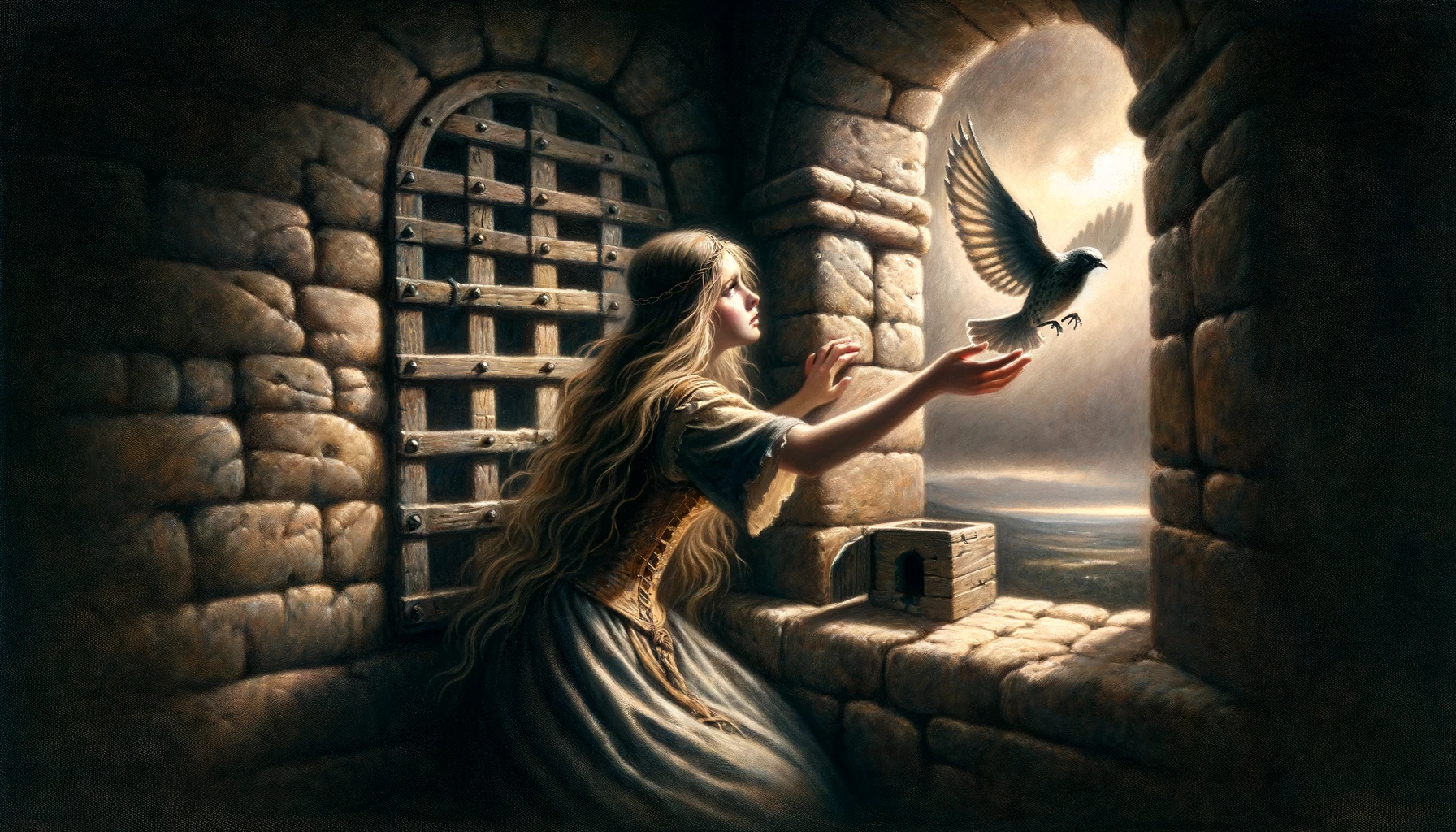Branwen, a central character in the Second Branch of the The Second Branch of the Mabinogi: Branwen Daughter of Llyr. She is a poignant figure in Welsh mythology. Her tale is one of sorrow, conflict, and ultimately, tragedy, intertwined with the fate of two nations.
In Welsh mythology, Branwen is remembered not only for her beauty and sorrow but also for her role in one of the most tragic and profound tales of the Mabinogi. Her story, rich in symbolic meaning, remains an integral part of Welsh cultural heritage.
Branwen’s Family
Branwen is the daughter of Llŷr and Penarddun and sister to Brân the Blessed, a giant and King of Britain.
Branwen’s Story
Her story begins with her betrothal to Matholwch, the King of Ireland, which was intended to form an alliance between Britain and Ireland but ultimately failed to bring peace.
The marriage leads to discord when Efnysien, Branwen’s half-brother, feels slighted that he wasn’t consulted about the marriage. In a fit of rage, he mutilates Matholwch’s horses, an act that sows the seeds of future conflict. Although Brân tries to smooth over the situation by giving Matholwch a magical cauldron, the damage is done.
In Ireland, Branwen is mistreated and relegated to the kitchens as a punishment for her brother’s actions. Despite this, she gives birth to an heir, Gwern. She manages to send a message to Brân using a starling, leading to Brân’s invasion of Ireland to rescue her.
The war between the Irish and Brân’s forces is marked by treachery and magical interventions. Efnysien, realizing the extent of his actions, sacrifices himself to destroy the magical cauldron, a key to the Irish forces’ resilience. The war devastates both sides, leaving only a handful of survivors.
The conflict results in Brân being mortally wounded. Overwhelmed by grief for the loss and destruction her marriage has caused, Branwen dies of a broken heart upon returning to Wales.
Branwen’s Grave
Branwen is supposedly buried at Bedd Branwen in Anglesey. Excavations in the area have found urns containing human ashes, hinting at the possible historical roots of the story in the Bronze Age.
Branwen or Bronwen
The name appears once as “Bronwen,” which translates to ‘white breast,’ a characteristic often ascribed to females in these tales. This attribute can be likened to the description of the heroine Olwen, whose ‘breasts were whiter than that of a white swan,’. It is possible that “Bronwen” was the original version of the name, which subsequently may have been altered due to the association with her brother Brân.
Interpretation as a Goddess
Branwen is sometimes interpreted as an ancient goddess, a theory supported by her association with Branwen’s Seat, a mountain peak in the Berwyn range. This connection to the land and its features is typical of deities in Celtic mythology.
Branwen’s story is a powerful narrative that explores themes of duty, familial loyalty, and the devastating consequences of conflict. It also reflects the ancient Celtic worldview where women’s roles were often pivotal in shaping the destinies of their people.
Branwen shares several similarities with Rhiannon, another prominent figure in Welsh mythology. Both were exiled by marriage and faced enslavement and mistreatment at the hands of their husbands’ people.
